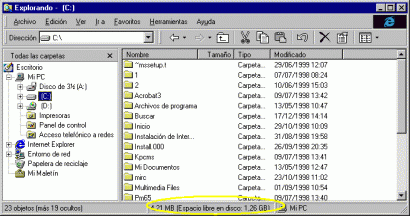 Citizens with the right to vote who are outside the national territory can vote through the consulates and embassies of their countries abroad. However, for this it is necessary that they carry out some procedures and that, in some way, they beg the authorities of their country to cast their vote. Because of this, this procedure is known by the term requested vote.
Citizens with the right to vote who are outside the national territory can vote through the consulates and embassies of their countries abroad. However, for this it is necessary that they carry out some procedures and that, in some way, they beg the authorities of their country to cast their vote. Because of this, this procedure is known by the term requested vote.
The vote requested in Spain
Currently, Spanish citizens who reside outside of Spain are faced with a series of complex procedures to vote. First, they have to contact the Electoral Census Offices (OCE) in writing within specified deadlines to request the vote. In addition, they must do so by ordinary mail. Once the request is received, the OCE sends the ballots so that the citizen can vote, either by mail or at the corresponding consulate.
The requested vote is not a traditional modality in Spain, but began to be used in 2011 with the introduction of a new electoral law. Obviously, this situation has generated complaints among many citizens living abroad. His discomfort focuses on several aspects:
1) it is a system that hinders voting,
2) the established deadlines are short and
3) there are delays in sending ballots.
Due to all this, a significant number of votes are invalidated or many citizens decide directly to renounce their right to vote. This circumstance has generated platforms of protest and, at the same time, it has been proposed that the requested vote be definitively suppressed and that it be possible to vote with a more simplified and direct system (for example, distributing ballot boxes and ballots in the different consulates abroad or through a telematic system in which the traditional ballot is not necessary).
In some countries, residents abroad can vote through a telematic system. With this modality, the requested vote would not be necessary
 Telematic voting or electronic voting is already used in several countries for their citizens to vote abroad, such as Belgium, Estonia, the United States, Brazil or India. The procedure is relatively simple: an electronic ballot box is installed in each consulate, registered citizens identify themselves through an official document and then choose the political option they want through a touch screen. In order for there to be a proof of the vote cast, the proof of vote is printed.
Telematic voting or electronic voting is already used in several countries for their citizens to vote abroad, such as Belgium, Estonia, the United States, Brazil or India. The procedure is relatively simple: an electronic ballot box is installed in each consulate, registered citizens identify themselves through an official document and then choose the political option they want through a touch screen. In order for there to be a proof of the vote cast, the proof of vote is printed.
Despite the fact that this type of vote is technically possible, some experts in electoral processes consider that it is not totally safe.
Photos: Fotolia - Jpgon / Atlantis









